Thermoplastic Elastomer (TPE), as a novel material combining the elasticity of rubber with the processing convenience of plastic, is increasingly becoming an indispensable part of modern industry and daily life.
Its unique properties unlock boundless possibilities in fields such as automotive, medical, and consumer goods.
TPE not only aligns with sustainable development trends through its eco-friendly and recyclable characteristics but also pushes the boundaries of materials science with its exceptional adaptability and multifunctionality.
This article will delve into the properties, classifications, and wide-ranging applications of TPE ,revealing how this material paves the way for future innovation.
What Is Thermoplastic Elastomer (TPE)?
TPE (Thermoplastic Elastomer), also known as thermoplastic rubber, is a polymer material blending rubber-like elasticity with plastic processability.
The molecular structure of TPE gives it the elasticity and flexibility of rubber at room temperature, but it can be plasticised when heated, making it suitable for thermoplastic processing techniques such as injection moulding and extrusion.
Unlike with more rigid materials, TPEs can be stretched and will return back to near original shape, offering a longer life and improved physical range.
First developed in 1958 with thermoplastic polyurethane (TPU) by Bayer, followed by styrenic block copolymers (SBCs) in 1963, TPEs are used in products like shoes, hoses, seals, and gaskets due to their stretchability, shape memory, recyclability, and ease of processing.
Additionally, TPEs can modify other plastics like polyvinyl chloride, PE, and PP, enhancing their performance and broadening their application scope. This versatility has led to the rapid growth and diversification of TPEs in modern manufacturing.
TPEs are categorized into generic classes based on their properties and structure, which helps in understanding their applications and performance characteristics.

Types of Thermoplastic Elastomers
TPEs are block copolymers or polymer blends with hard segments (for strength and rigidity) and soft segments (for elasticity and flexibility), with compositions varying by type.
Common types include styrenic block copolymers (SBCs), polyolefin blends (TPOs, TPVs), thermoplastic polyurethanes (TPUs), thermoplastic copolyesters, elastomeric alloys, and customized polymers.
One polymer type adds elastic properties to the compound, the other one provides thermoplastic properties (this group includes TPV, TPS, and TEH compounds).
Classified into six generic classes per ISO 18064, plus an unclassified category, TPEs are vital across industries due to their unique properties, which we’ll explore in material science contexts.
Thermoplastic Styrenic Block Copolymers
Thermoplastic styrenic block copolymers (TPE-S) are among the most widely used types of TPEs, prized for their exceptional combination of performance and processability.
These block copolymers are engineered to deliver high elasticity, making them ideal for applications where flexibility and resilience are essential, such as shoe soles and ergonomic grips.
TPE-S materials also stand out for their excellent abrasion resistance and chemical resistance, ensuring long-lasting performance even in demanding environments.
Their compatibility with most dyes allows for vibrant coloration, making them a popular choice in consumer products.
In the medical field, TPE-S is valued for its biocompatibility and resistance to chemicals and abrasion, making it suitable for medical tubing, metering components, and other critical healthcare applications.
The ease of processing and adaptability of TPE-S materials continue to drive their widespread adoption across a broad range of industries.
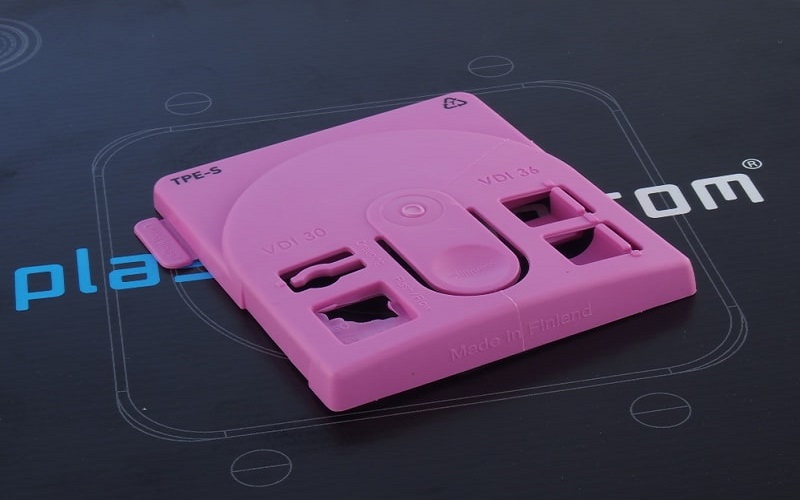
Thermoplastic Polyolefin Elastomers (TPE-O or TPO)
TPO materials, often referred to as thermoplastic olefins, are thermoplastic elastomers that consist of polypropylene as the hard segment and EPDM rubber as the soft segment.
TPOs are lightweight, with a specific gravity of around 0.88, and can withstand temperatures up to 100°C. They also exhibit excellent weather and ozone resistance, making them suitable for automotive seals, waterproofing materials, and cable insulation.
Through dynamic vulcanization, TPO can be transformed into TPV materials—also known as tpe v (thermoplastic vulcanisates).
TPE-Vs offer improved mechanical properties, high heat resistance, and elastomeric characteristics, making them suitable for demanding applications such as automotive seals and engine components.
Thermoplastic Polyurethane
Thermoplastic polyurethane (TPU) is formed by reacting isocyanates with polyols, producing a material with exceptional mechanical strength, abrasion resistance, and flexibility.
TPU materials are particularly valued for their superior wear resistance and oil resistance, which makes them ideal for footwear, medical fabrics, and military equipment.
However, TPUs have limitations such as lower heat resistance and susceptibility to yellowing upon exposure to UV light.
Thermoplastic Polyester Elastomers
Thermoplastic Polyester Elastomers (TPE-E), also known as Thermoplastic Copolyesters (TPC), are a class of block linear copolymers renowned for their exceptional balance of strength, flexibility, and thermal stability.
These materials consist of alternating crystalline segments, which provide rigidity, impact resistance, and thermal stability, and amorphous segments, which impart rubbery flexibility and elasticity to the copolymer.
Related copolymers, such as polyether ester amide and thermoplastic polyether block amides, also feature segmented structures that deliver high-performance properties, including heat and chemical resistance.
The combination of these segments results in a versatile material that excels in applications requiring durability and elasticity, such as automotive parts, industrial belts, and flexible hoses.
Key Properties Of Thermoplastic Elastomers
Thermoplastic Elastomers uniquely combine the elastic properties of rubber with the processing advantages of plastic material, offering a versatile material for diverse applications.
Defined by three essential characteristics—moderate stretchability with near-complete shape recovery upon stress removal, excellent processability, and recyclability—TPEs deliver both performance and sustainability.
Below is a comprehensive overview of TPE material properties:
Elastic Properties
One of the standout features of TPE materials is their remarkable elasticity, which exemplifies their typical elastic properties. TPEs can stretch to twice their original length and return to their desired shape, showcasing their high elasticity and resilience.
This property is particularly beneficial in applications requiring durability and flexibility, such as seals, gaskets, and flexible joints, due to their high elastic properties, elastomeric properties, rubber like properties, flexible polymer compounding, natural rubber, and flexible pvc.
Chemical Resistance
The chemical resistance of TPE compounds varies depending on their formulation, making some types more suitable for harsh environments than others.
For example, thermoplastic polyolefins (TPOs) are known for their excellent chemical resistance, while the inclusion of thermoplastic polyamides in TPE-A enhances oil resistance and mechanical strength.
This material stability allows TPE-s to be tailored for specific uses in chemically aggressive settings.
Temperature Resistance
Different types of TPEs exhibit varying levels of high temperature resistance, a critical factor for their use in automotive and industrial applications.
Many TPEs can withstand temperature extremes, from -30°C to +150°C, ensuring their performance in demanding environments. Certain TPEs also retain flexibility and resistance at low temperatures, making them suitable for applications that require reliable performance in cold environments.
This makes TPEs a reliable choice for high temperature applications requiring consistent performance across a wide temperature range.
Hardness and Tensile Properties
The hardness and tensile properties of thermoplastic elastomers (TPEs) are key factors that determine their suitability for specific applications.
TPEs can be engineered to exhibit a broad spectrum of hardness levels, ranging from soft and highly flexible to firm and rigid, allowing designers to select the ideal material for their needs.
The hardness of TPEs is typically measured using the Shore durometer scale, which quantifies a material’s resistance to indentation and provides a standardized way to compare different thermoplastic elastomers TPEs.
Tensile properties, such as tensile strength and elongation at break, are equally important. TPEs with high tensile strength and elongation are preferred in applications that demand both flexibility and durability, such as automotive parts, industrial seals, and flexible connectors.
By carefully selecting and formulating TPEs with the desired hardness and tensile characteristics, manufacturers can ensure optimal performance and longevity in their end products.
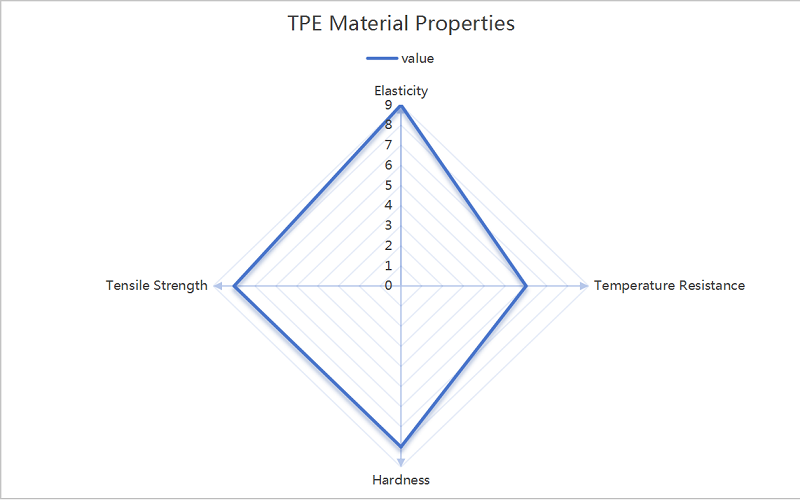
TPE Processing Methods
Thermoplastic Elastomers seamlessly blend the resilient mechanical properties of vulcanized rubber with the streamlined processing benefits of thermoplastics, offering significant advantages in manufacturing.
Unlike thermoset rubbers, which require time-intensive vulcanization and depend on cure systems such as cross-linking or sulfur vulcanization, TPEs eliminate this step, simplifying production, reducing cycle times, and lowering costs.
TPEs also require little or no compounding, which further streamlines manufacturing and improves product consistency.
Additionally, advanced variants like Thermoplastic Vulcanizates (TPVs) deliver enhanced performance, combining superior elasticity and durability for demanding applications.
Injection Molding
Injection molding is a processing method of tpe, prized for its precision and efficiency. During injection molding, TPEs behave as other thermoplastics in hot runners without major problems.
This method enables the creation of intricate, high-quality parts with smooth finishes, making it ideal for diverse applications such as automotive components, medical devices, and consumer goods.
The versatility of TPE injection molding supports complex geometries and overmolding, ensuring both functional performance and aesthetic appeal.
Extrusion
Extrusion is another key technique for TPEs, where molten material is shaped into continuous profiles through a die.
This process excels in producing complex, uniform shapes like cable sheathing, seals, and tubing, often co-extruded with other materials for enhanced functionality.
TPE extrusion’s adaptability makes it a go-to choice for applications requiring consistent, high-performance profiles in industries ranging from construction to electronics.
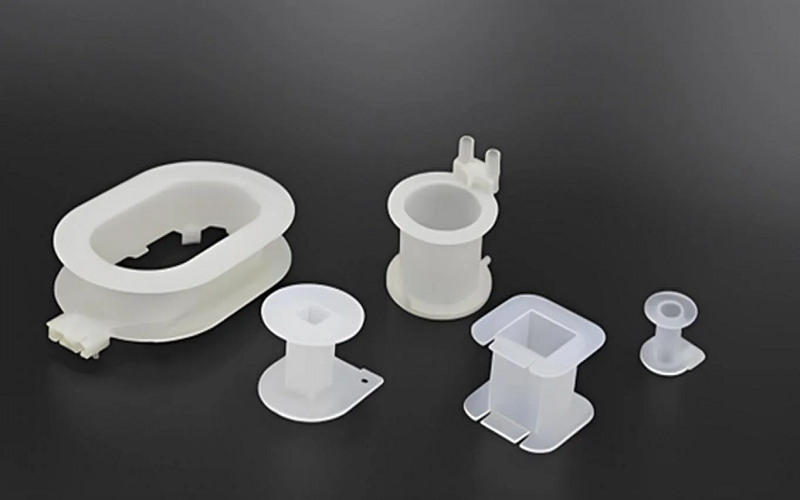
Where Are Thermoplastic Elastomers Used?
The versatile nature of thermoplastic elastomers allows them to meet the needs of various industries, including automotive, medical, consumer products, and sporting goods. Their dual properties of rubber and plastics make TPEs indispensable in modern manufacturing.
In many demanding applications, reinforcing agents are added to TPEs to improve mechanical strength and durability, ensuring the materials meet specific performance requirements.
Automotive Sector
In the automotive sector, TPE s are used for components such as airbag covers and constant velocity joint boots. Their lightweight nature contributes to fuel efficiency, making vehicles more economical and environmentally friendly.
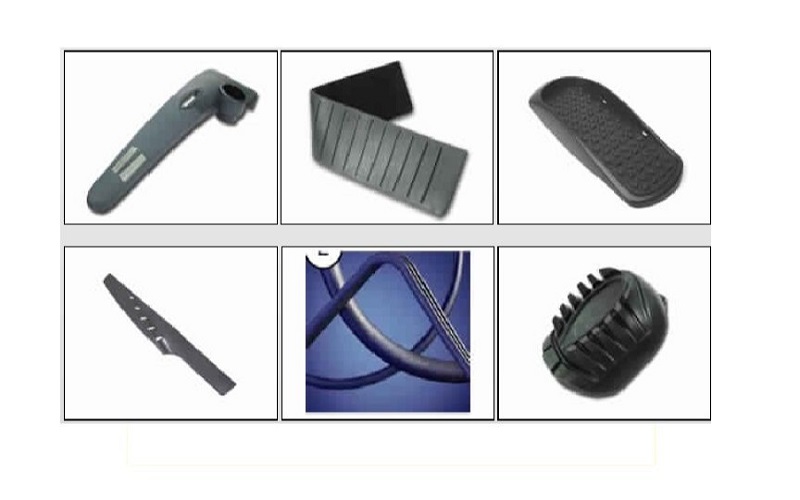
Medical Devices
Medical grade TPEs are important in healthcare because they resist damage from fluids, making them durable for devices like tubing, oxygen masks, and drip chambers.
Medical device manufacturers choose TPEs that meet strict standards such as ISO 10993 to ensure safety. Standard tests confirm their physical and mechanical properties, making them reliable for medical use.
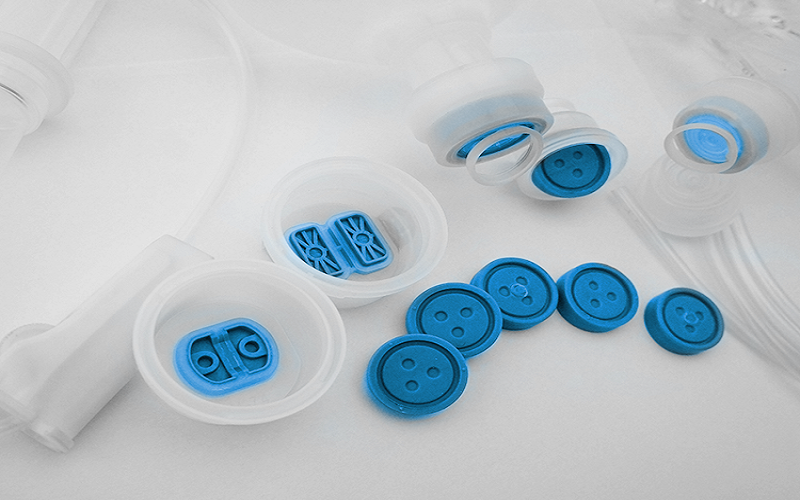
Consumer Products
TPEs are widely used in consumer products to enhance comfort and functionality. From ergonomic grips for tools to flexible and lightweight shoe soles, TPE s improve the user experience in everyday items.
In the realm of sporting goods, TPEs are prized for their elasticity, abrasion resistance, and non-slip properties.
They are used in products such as resistance bands, yoga mats, ergonomic bike grips, and golf club grips, enhancing performance and durability.
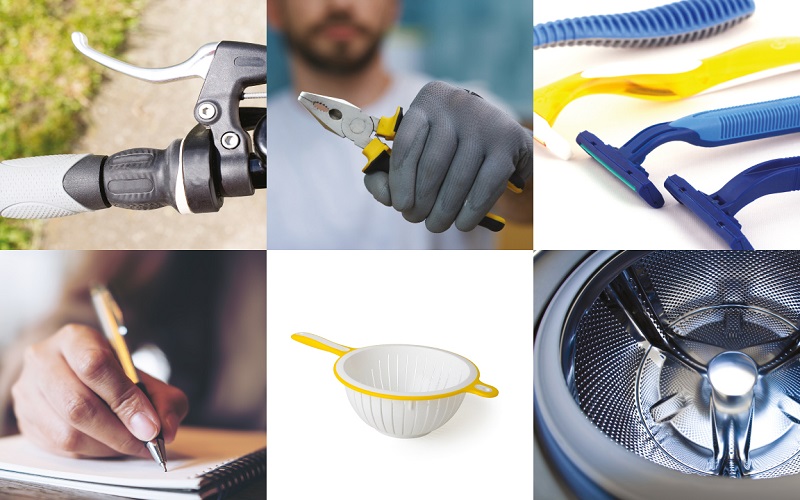
Advantage Of TPE
The advantages of thermoplastic elastomers are numerous, making them a preferred choice in various industries. Their superior processing capabilities, exceptional elasticity, and environmental benefits make TPEs stand out.
In particular, some bio-based TPEs are produced using renewable raw materials such as sugar cane, which serves as a source of monomers or polymers for creating sustainable and environmentally friendly polymer components.
Outstanding Elasticity And Flexibility
TPEs exhibit high elastic recovery, combining the elasticity of rubber with the processability of plastics. They maintain flexibility even in low-temperature environments, making them suitable for automotive interiors and sports equipment that require weather resistance, particularly when using a tpe blend.
Processing Advantages
TPEs do not require vulcanization, allowing for direct molding through injection molding, extrusion, and blow molding processes.
TPEs can be easily colored, textured, or blended with additives to achieve specific aesthetic or functional properties.
Additionally, TPE production consumes over 25% less energy than traditional rubber, making it both time and cost-efficient.
Environmental Benefits
TPEs are non-toxic and free from harmful additives like plasticizers and heavy metals, complying with EU ROHS, REACH, and FDA food contact standards. They are suitable for medical tubing and taste free sealing solutions for children’s toys.
Moreover, TPEs support closed-loop recycling and some bio-based TPEs are biodegradable, reducing environmental impact.
What Are The Disadvantages Of TPE?
Despite their many advantages, TPEs have some limitations:
Limited High-Temperature Performance
TPEs typically soften or lose elasticity at elevated temperatures, with most standard grades functioning optimally below 120°C. This restricts their use in high-heat environments, such as under-hood automotive components or industrial settings, where thermoset rubbers or high-performance plastics may be preferred.
Specialized TPE grades with enhanced heat resistance exist but often come at a higher cost, reducing cost-effectiveness.
Susceptibility to Creep
Under prolonged mechanical stress or load, TPEs may exhibit creep, a gradual deformation over time. This can compromise dimensional stability in applications requiring constant pressure, such as seals or gaskets, necessitating careful design and material selection to minimize this effect.
Is TPE A Safe Material?
Safety is a significant consideration when selecting materials for various applications, and TPEs excel in this regard when used within regulated conditions.
High-quality TPE materials are free from harmful substances like phthalates and bisphenol A (BPA), and they meet stringent standards such as FDA, LFGB, and EU regulations for food contact.
This makes them suitable for products like food packaging, medical devices such as gloves and catheters, and children’s toys.
Additionally, TPEs do not easily cause allergic reactions or irritations upon contact with skin, making them ideal for prolonged use in medical and consumer applications.
However, it is crucial to ensure the quality and sourcing of TPE materials. Inferior TPEs might contain excessive plasticizers or heavy metals, so it is essential to choose certified products from reputable brands.
While TPEs are generally safe, exposure to extreme conditions, such as high temperatures above 121°C, can lead to thermal degradation, releasing low molecular weight substances. Long-term exposure to organic solvents or UV radiation can also cause swelling or aging.
In summary, the answer to “Is TPE safe?” is a resounding yes for high-quality, certified TPEs used within their recommended conditions.
Their non-toxic, hypoallergenic nature and compliance with rigorous standards make them a trusted material for food, medical, and consumer applications.
However, careful selection and awareness of environmental limitations are crucial to maximizing their safety and performance.
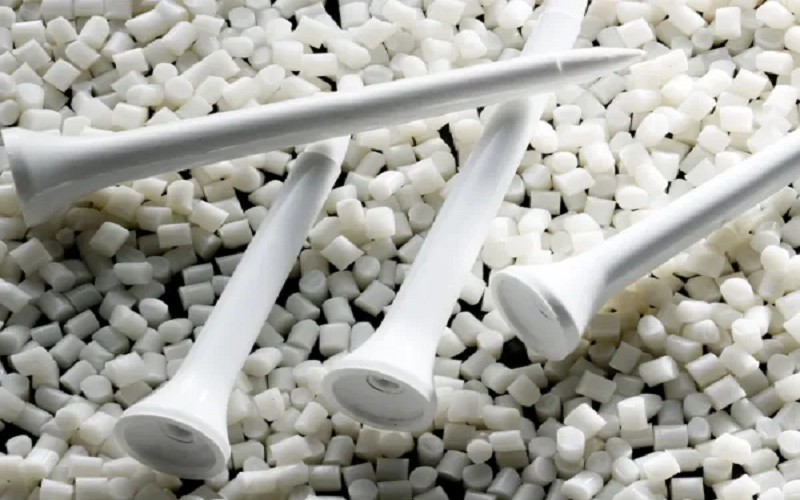
Thermoset Elastomers vs Thermoplastic Elastomers
Although most elastomers are thermosets, Thermoplastic Elastomers have emerged as a transformative alternative, blending the elasticity of rubber with the processing ease of thermoplastics. Below is a detailed comparison to highlight their differences and advantages:
Processing: Thermoset elastomers require vulcanization, a chemical process that sets their shape permanently, making production slower and less flexible. TPEs, being thermoplastic, are easily processed using standard plastic manufacturing techniques, offering faster production and cost efficiency.
Recyclability: TPEs are recyclable, aligning with modern sustainability goals, while thermoset elastomers are not, due to their irreversible cross-linked structure.
Performance Trade-offs: Thermosets excel in extreme conditions (e.g., high temperatures, chemical exposure), while TPEs offer versatility and ease of manufacturing, making them ideal for consumer and medical applications.
Cost and Efficiency: TPEs generally have lower processing costs and shorter cycle times, while thermosets involve more complex and costly production.
Aspect | Thermoset Elastomers | Thermoplastic Elastomers (TPEs) |
Definition | Elastomers that undergo irreversible chemical cross-linking (vulcanization) to form a permanent shape. | Elastomers that combine rubber-like elasticity with thermoplastic processability, reversible upon heating. |
Chemical Composition | Typically composed of long polymer chains cross-linked via chemical bonds (e.g., sulfur or peroxide curing). | Block copolymers or blends with hard (rigid) and soft (elastic) segments, e.g., SBCs, TPUs, TPOs. |
Processing | Requires vulcanization (heat and chemical curing), a time-intensive process. Processed via compression molding or extrusion. | Easily processed via injection molding, extrusion, or blow molding without vulcanization, using standard thermoplastic equipment. |
Recyclability | Difficult to recycle due to permanent cross-links; waste often requires special disposal or repurposing. | Highly recyclable; can be melted and reprocessed multiple times, reducing waste and supporting sustainability. |
Processing Time/Cost | Longer cycle times and higher costs due to vulcanization and complex compounding requirements. | Shorter cycle times and lower costs due to simplified processing and minimal compounding needs. |
Elasticity | Excellent elasticity and recovery; often superior in high-deformation applications. | Good elasticity and shape memory, though slightly less resilient than thermosets in extreme conditions. |
Durability | High durability, especially in harsh environments (e.g., extreme temperatures, chemicals). | Good durability, but may have lower resistance to extreme heat or certain chemicals compared to thermosets. |
Temperature Resistance | Better high-temperature resistance (e.g., silicone up to 200°C or more). | Limited high-temperature resistance (typically <100°C for most TPEs, except specialized types like TPVs). |
Thermoset elastomers are preferred for applications requiring superior durability and resistance to extreme conditions, such as in tires or industrial seals.
TPEs, with their three essential characteristics—moderate stretchability with shape recovery, ease of processing, and recyclability—are ideal for applications prioritizing manufacturing efficiency, design flexibility, and environmental sustainability, such as in consumer goods, automotive components, and medical devices.
The choice between the two depends on the specific performance requirements and production goals.
Summary
Thermoplastic elastomers have emerged as a revolutionary material, combining the best properties of rubber and plastics. They offer exceptional elasticity, chemical and temperature resistance, and are easy to process using standard plastic manufacturing techniques.
TPEs find applications in diverse fields, from automotive parts and medical devices to consumer products and sporting goods.
Despite some limitations, such as lower heat resistance compared to traditional rubber, the advantages of TPEs in terms of versatility, processing efficiency, and environmental sustainability make them a superior choice for many applications.
As industries continue to innovate, TPEs are poised to play an increasingly vital role in the development of new and improved products.
